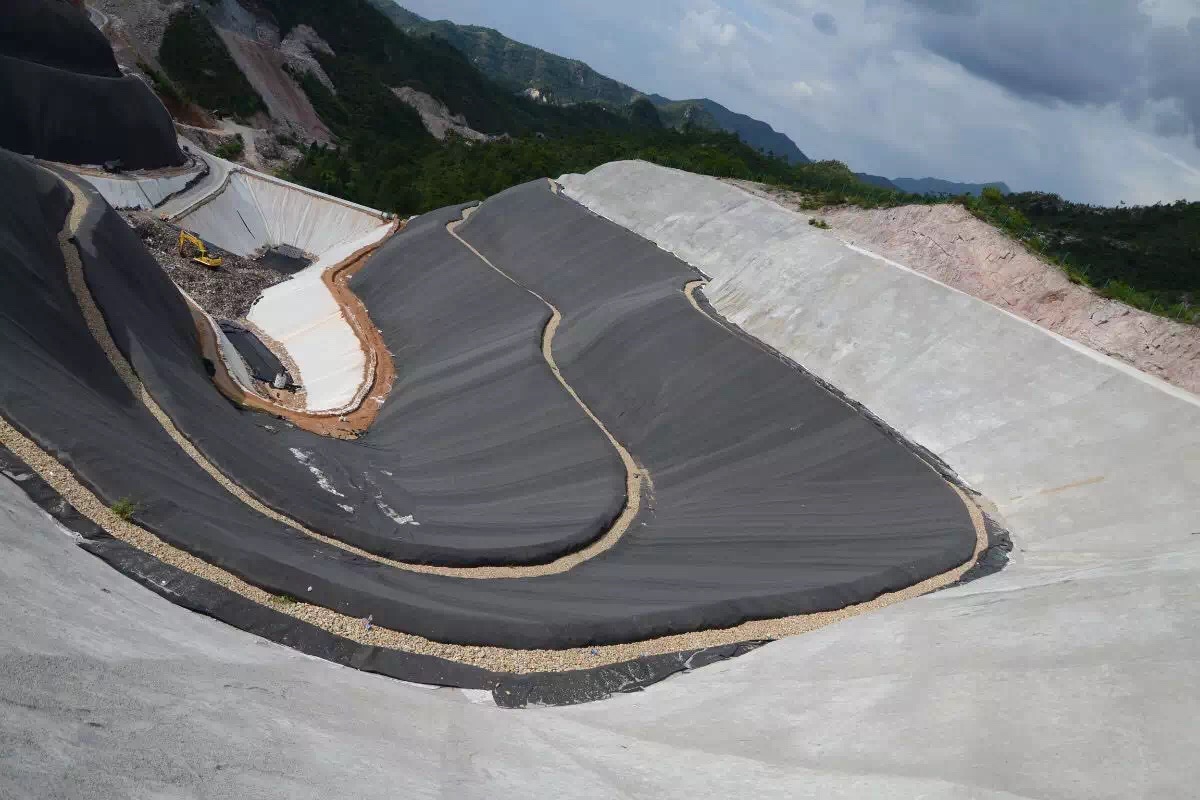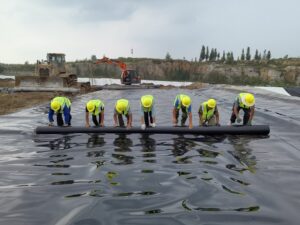Geomembrane mat price
The price of geomembrane mats varies based on a variety of factors, including material type, thickness, specifications, manufacturer, market demand, and geographic location. In addition, different markets and regions may also have different price levels. The following are some of the main factors that affect the price of geomembrane mats:
Material Type: Different types of geomembrane mat materials may have different costs. Generally speaking, high-quality, high-performance geomembrane mats are more expensive.
Thickness: The thickness of the geomembrane mat can be selected based on the requirements of the specific project. Thicker geomembranes generally require more material and therefore cost more.
Specifications: Geomembrane mats of different specifications and sizes may have different prices. Custom-sized geomembranes are generally more expensive.
Manufacturer: Geomembrane mats offered by different manufacturers may have different price levels. Reputable manufacturers usually offer high-quality products, but prices may be higher.
Market demand: Changes in market demand may also affect price. Prices may increase during tight market conditions and may decrease during abundant supply.
Location: Prices may vary based on location. Shipping and logistics costs may also affect the final price.
Project Size: Larger projects can often command more competitive prices because they typically purchase larger quantities of materials.
Quality and Certifications: Geomembrane mats with specific quality certifications or standards compliance will generally be more expensive, as they may need to undergo more stringent quality control and testing.
Due to these factors, it is difficult to provide a specific price range. If you need to purchase geomembrane mats, it is recommended to contact multiple suppliers to get quotes and choose the best option for your project needs and budget. Prices may also change over time, so you should also pay close attention to market trends and industry developments.

Geomembrane mat specifications
Geomembrane mat specifications can vary based on the needs of different projects and the manufacturer’s product line, but typically include the following key specifications:
Thickness: The thickness of the geomembrane mat can vary based on the requirements of the specific project. Typical thickness ranges are usually between 3mm and 10mm, but thicker options are also available upon request.
Width: Geomembrane mats are usually supplied in standard rolls, and the width can be customized as needed, usually between 2 meters and 6 meters.
Length: Roll lengths are usually standard and can be cut to suit project needs. The length is usually between 30 meters and 100 meters.
Quality and Materials: Different geomembrane mats may be made from different types of bentonite and geotechnical materials and have different quality and performance characteristics. Common materials include montmorillonite and illite.
Grooved surface: Some geomembrane mats have grooved surfaces, which help increase the bonding between the geomembrane and other surfaces and improve anti-seepage performance.
Quality Certifications: Some geomembrane mats may meet specific quality certifications or standards, such as ASTM (American Society for Testing and Materials) standards or GRI (Geocomposites Institute) standards.
Compression Performance: Geomembrane mat specifications typically include data on its compression performance under varying stress and temperature conditions.
Chemical Stability: Specifications may include data on the stability and corrosion resistance of the geomembrane mat to various chemicals.
Please note that exact specifications will vary by manufacturer and product line. When selecting geomembrane mats, appropriate specifications should be selected based on the requirements of the specific project, engineering environment and geological conditions. It is important to communicate with the supplier or manufacturer to obtain geomembrane mat specifications that meet the needs of the project.

How to judge the quality of geomembrane mat
Judging the quality of geomembrane mats is key, especially when it comes to ensuring the reliability and durability of geotechnical or environmental projects. The following are some methods and factors that can be used to evaluate and judge the quality of geomembrane mats:
Manufacturer Reputation: Choose a reputable manufacturer or supplier who typically provides high-quality products and may have recognized quality standards.
Quality certification: Check whether the geomembrane mat meets international or national quality standards, such as ASTM (American Society for Testing and Materials) or GRI (Geocomposites Institute) standards. Products that meet certification are generally of higher quality.
Product Specifications: Carefully review product specifications, including thickness, width, length, material type, etc., to ensure they are consistent with project needs.
Chemical Stability: Understand the geomembrane mat’s resistance to chemicals that may be present in the project to ensure it can withstand environmental conditions.
Physical Properties: Evaluate the physical properties of geomembrane mats such as tensile strength, tear strength, puncture strength and compression properties. These parameters can provide information about the strength and durability of the product.
Grooved Surface: If the geomembrane pad has a grooved surface, make sure the quality and design of the grooved surface meets project requirements to ensure bonding to other surfaces.
Manufacturer test report: Suppliers are required to provide product test reports, including performance testing, quality control and certification documents. These reports can provide useful information about product performance and quality.
Field Inspection: Conduct a field inspection of the geomembrane mat at the project site to ensure that it is installed in compliance with specifications and manufacturer’s recommendations to ensure its performance.
Reference case: Understanding the application and performance of this geomembrane mat in similar projects can provide information about its actual reliability.
Warranty period: Check the product warranty period provided by the supplier. Long-term warranty is usually a sign of the manufacturer’s trust in the quality of the product.
Taking these factors into consideration can help you judge the quality of your geomembrane mat and ensure you choose a high-quality product that fits your project needs. Working with professional engineers and geotechnical materials experts is also an important step in ensuring the quality of geomembrane mats.
Author

Founded in 2002, Tinhy's team focuses on the manufacturing, marketing, installation, application and research and development of geosynthetic materials.
View all posts






